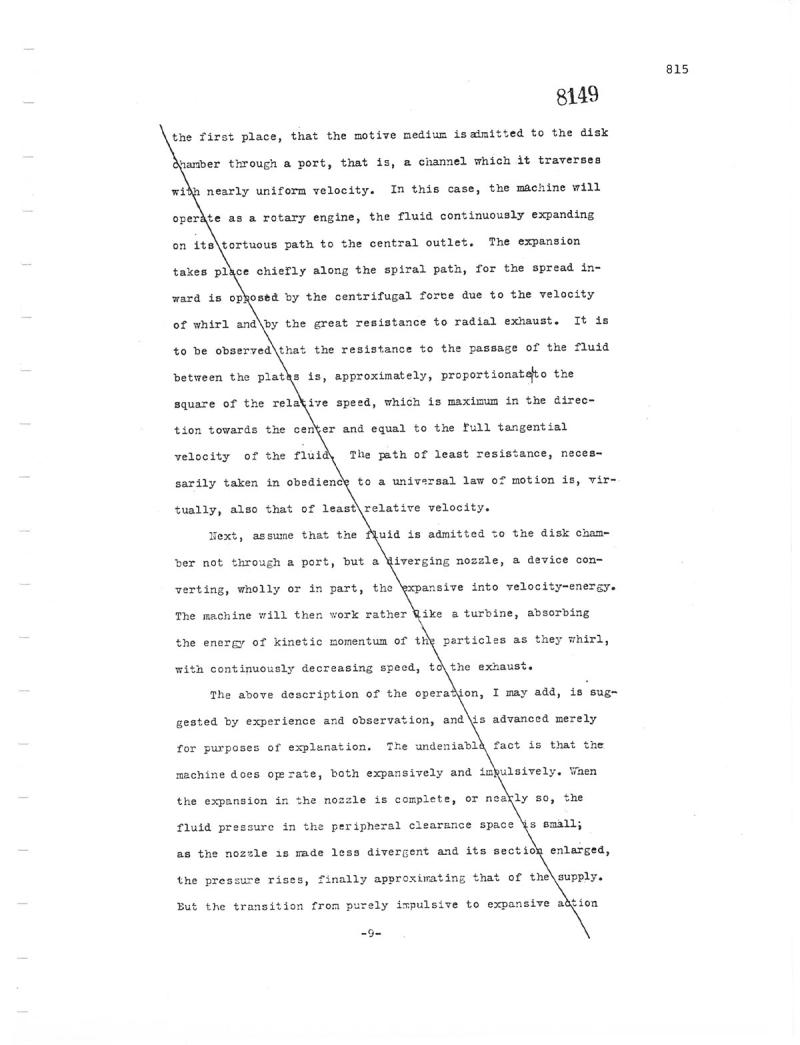
Nikola Tesla Patents
Nikola Tesla U.S. Patent 1,061,142 - Fluid Propulsion Patent Wrapper Page 15
T T 1 T 8149 the first place, that the motive medium is admitted to the disk dhamber through a port, that is, a channel which it traverses with nearly uniform velocity. In this case, the machine will operate as a rotary engine, the fluid continuously expanding on its tortuous path to the central outlet. The expansion takes place chiefly along the spiral path, for the spread inward is opposed by the centrifugal force due to the velocity of whirl and by the great resistance to radial exhaust. to be observed that the resistance to the passage of the fluid between the plates is, approximately, proportionate to the square of the relative speed, which is maximum in the direction towards the center and equal to the full tangential velocity of the fluid The path of least resistance, necessarily taken in obedience to a universal law of motion is, virtually, also that of least relative velocity. Next, assume that the fluid is admitted to the disk chamber not through a port, but a diverging nozzle, a device converting, wholly or in part, the expansive into velocity-energy. The machine will then work rather like a turbine, absorbing the energy of kinetic momentum of the particles as they whirl, with continuously decreasing speed, to the exhaust. The above description of the operation, I may add, is suggested by experience and observation, and is advanced merely for purposes of explanation. The undeniable fact is that the machine does ope rate, both expansively and impulsively. When the expansion in the nozzle is complete, or nearly so, the fluid pressure in the peripheral clearance space is small; as the nozzle is made less divergent and its section enlarged, the pressure rises, finally approximating that of the supply. But the transition from purely impulsive to expansive action -9It is 815
